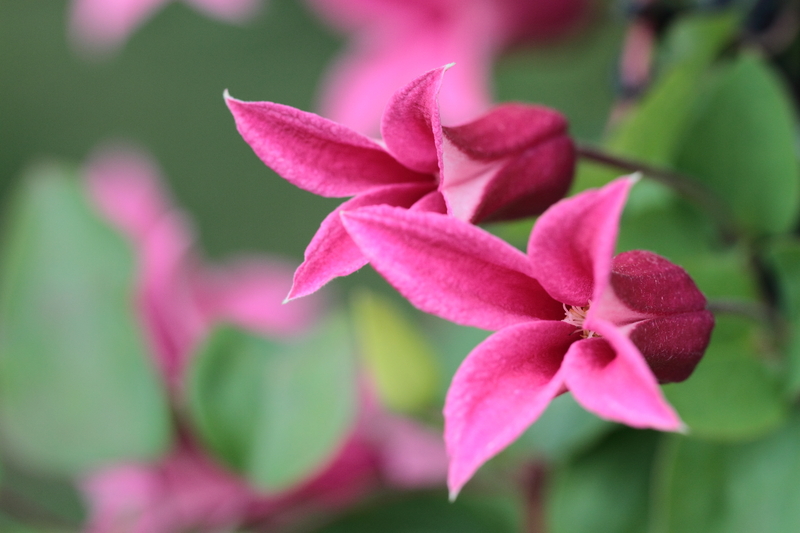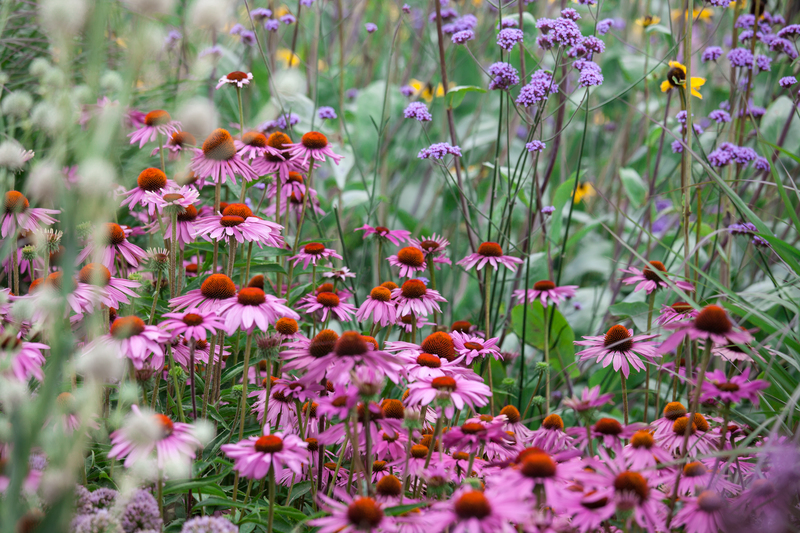3 Game-Changing Tips for Weed Control Success
Posted on 13/06/2025
Weed control is a perennial challenge for gardeners, landscapers, and farmers alike. Whether you're trying to cultivate a lush lawn, bountiful vegetable patch, or simply keep your pathways neat, unwanted weeds seem to spring up overnight, threatening your hard work and the health of your plants. But what if you could turn the tables in your favor with a few proven strategies?
Discover the best practices for effective weed management by exploring these three game-changing tips. From understanding weed biology to integrating smart technology and natural barriers, these methods will not only help you achieve weed control success but also promote a thriving, resilient landscape.
Why Sustainable Weed Control Matters
Sustainable weed control isn't simply about eliminating unwanted plants--it's about fostering a healthy ecosystem while maintaining soil fertility, conserving water, and reducing environmental impact. The stakes are high:
- Weeds compete with your desired plants for water, nutrients, sunlight, and space.
- Invasive species can introduce pests and diseases, further harming your crops or garden.
- Misuse of chemical controls may harm beneficial insects, soil microbes, and local waterways.
Now, let's get into the three transformative tips that will put you on the fast track to weed-free success.

Tip 1: Understand Your Enemy--Know Your Weeds
Identify Common Weeds in Your Area
Knowledge is power. The first step in any successful weed management program is identifying the types of weeds plaguing your lawn or garden. There are three main categories:
- Annual Weeds: Grow, set seed, and die in a single season (e.g., crabgrass, chickweed).
- Biennial Weeds: Complete their life cycle in two years (e.g., wild carrot, burdock).
- Perennial Weeds: Live for several years and often spread via roots or runners (e.g., dandelions, bindweed).
Why Precise Identification is Crucial for Weed Control
Accurate weed identification helps determine the most effective removal and prevention methods. For example, pulling perennial weeds by hand can sometimes stimulate more root growth if not done correctly, while annual weeds are often easily managed by removing their seed heads before they set seed.
Leverage Digital Tools for Weed Identification
Consider using mobile weed identification apps or university extension guides. Many states provide comprehensive databases of local weed species, complete with pictures and management recommendations. Document problem areas in a notebook or digital map for seasonal monitoring.
Tip 2: Create a Multi-Layered Weed Suppression Plan
Cultural Practices for Intense Weed Control
The second tip involves layering different weed prevention strategies to create an environment where weeds cannot thrive. Here's how:
- Mulching:
- Apply organic mulch (wood chips, straw, compost) or inorganic mulch (landscape fabric, rubber mulch) around plants.
- Mulch blocks sunlight, smothering weed seedlings before they emerge.
- Organic options also improve soil structure and moisture retention.
- Dense Planting:
- Use groundcovers, cover crops, or closely-spaced garden plants to form a dense canopy.
- This shades the soil and deprives weeds of light, making it harder for them to establish.
- Crop Rotation and Diversification:
- Switch up plant locations each year to prevent weed adaptation and disrupt their life cycles.
- Diversified gardens confuse weeds and pest insects alike.
Physical Barriers for Effective Weed Suppression
- Landscape fabric under paths or beds creates a durable weed barrier. For best results, use UV-resistant products and cover with mulch for aesthetics.
- Edge gardens and lawns to prevent root and rhizome spread from established weed patches.
- Consider raised beds for vegetables, which keep out many annual weeds and make spot control easier.
Timing Is Everything
Follow the weed calendar in your region. Early spring is the best time to apply pre-emergent mulch or weed barriers--before weed seeds germinate. Prompt removal of seedlings in the first few weeks prevents them from ever going to seed.
Tip 3: Be Strategic and Selective with Weed Control Products
Smart Use of Herbicides for Optimal Weed Management
Chemical weed control can be highly effective when used correctly, but overuse or incorrect application causes environmental damage and creates herbicide-resistant weeds. Take a targeted approach:
- Choose the Right Product: Pick post-emergent herbicides for existing weeds or pre-emergent for seeds. Read labels and only use products appropriate for the weed type and growth stage.
- Spot Treat, Don't Blanket Spray: Apply chemicals directly to affected areas, not entire lawns or beds, to minimize harm and save money.
- Combine Mechanical and Chemical Controls: Use a hoe, hand-puller, or string trimmer for larger weeds before using an herbicide for any regrowth or stubborn perennials.
Natural and Organic Weed Control Alternatives
If you prefer an eco-friendly approach, consider:
- Boiling water and vinegar as spot treatments--effective on annual weeds but may require repeated application for perennials.
- Corn gluten meal as a pre-emergent to suppress weed seed germination in lawns.
- Flame or steam weeders for patios, driveways, and walkways--fast and chemical-free but not suitable for all areas.
- Mulching with cardboard/newspapers under compost for an extra layer of defense that's biodegradable and sustainable.
Bonus: Monitor and Adapt Year-Round
Consistent Maintenance is the Key to Lasting Weed Control
Even after major suppression efforts, some weeds will inevitably appear. Regular garden inspection, ideally every week during peak growing season, makes a big difference. Pull out any new weeds before they mature and spread. Periodically replenish mulches and repair barriers as needed. Track your successes and failures--gardens are dynamic, and the right weed management technique can vary by season or year.
Integrated Weed Management: Combining Approaches for Maximum Success
Ultimate weed control success is achieved through integrated weed management--combining mechanical, cultural, biological, and chemical tools in a way that best suits your landscape. This approach minimizes environmental risks and adapts to changing conditions, weather patterns, and weed populations.
- Rotate controls so weeds don't become resistant to any one method.
- Take advantage of natural predators and soil health to reduce weed vigor.
- Use physical removal for small outbreaks and strategic herbicide application for tough perennial weeds.

Frequently Asked Questions About Weed Control
How often should I weed my garden or lawn?
Inspection once a week, especially during the growing season, ensures early removal of weeds before they go to seed.
What is the best time of year to start weed control?
Early spring is ideal--before weeds have a chance to germinate. Apply mulch, barriers, and pre-emergent controls as early as possible.
Are there any environmentally friendly weed control options?
Yes. Non-chemical options like mulching, flame weeding, boiling water, vinegar solutions, and hand-pulling are all effective, especially when combined with cultural practices like crop rotation and dense planting.
Conclusion: Transform Your Landscape With Proven Weed Control Techniques
Effective weed control isn't about waging war on every green shoot in your yard or garden. It's about working smarter, not harder. By identifying weeds accurately, creating a layered suppression plan, and strategically using products and natural methods, you can control weeds with fewer chemicals, lower costs, and better results. Just remember--consistent monitoring and adaptation are the secret weapons of successful gardeners worldwide.
Implement these three game-changing weed control tips this season and watch your landscape thrive, free from the competition and chaos of invasive weeds. A little knowledge and the right strategy go a long way toward achieving weed-free success!

